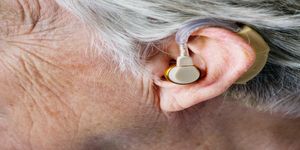How a Magnetic Bacterium Creates a Compass Needle
There are organisms that can use the magnetic field of the earth to navigate, including animals like honey bees and migratory birds, and some bacteria. Scientists have now learned more about how a strain type of bacteria, Magnetospirillum gryphiswaldense, use magentotaxis - their sense of the Earth’s magnetic field, for movement. The bacteria carry crystals of magnetite called magnetosomes, which can form a straight chain that functions as a sort of biological compass needle. The findings, which illustrate the role of a protein called MamY in the process, have been reported in Nature Microbiology.
The spiral-shaped bacterium has around fifty magnetosomes inside it, which are anchored to a thread-like filament. They can thus clump together, or line up like a needle along the filament. The bacterium can then use the structure to swim along with the orientation of the planet’s magnetic field, and quickly reach the habitat they like - water body sediments.
In this work, the reseaarchers determined that a protein helps the bacteria form a straight line even though the bacterium is spiral-shaped. Using cryo-electron tomography and super-resolution microscopy, they found that the MamY protein orchestrates the lineup of magnetosomes, and optimally arranges the chain so it aligns the swimming movement of the microbe with the magnetic field - parallel to the cell’s longitudinal axis.
When these microbes lack MamY proteins, their magnetosomes cannot form a linear chain. The resulting compass needle structure is bent, and creates a wobble as the microbes swim. When these bacteria don’t have a filament that anchors the magnetosomes, no chains form at all and the magnetosomes just sit in a clump.
"All these observations confirm the conclusion: MamY is the key protein that arranges the magnetosome chain in the cell in such a way that the function of a compass needle is perfectly fulfilled. The protein enables the bacteria to navigate optimally," noted the lead study author Dr. Frank Müller, a scientist in the Department of Microbiology at the University of Bayreuth.
Learn more about magnetic bacteria, and how they may benefit us, from the videos.
A JoVe publication (a peer-reviewed video journal) that describes how to collect and purify these bacteria can be found here.
Sources: University of Bayreuth, Nature Microbiology









